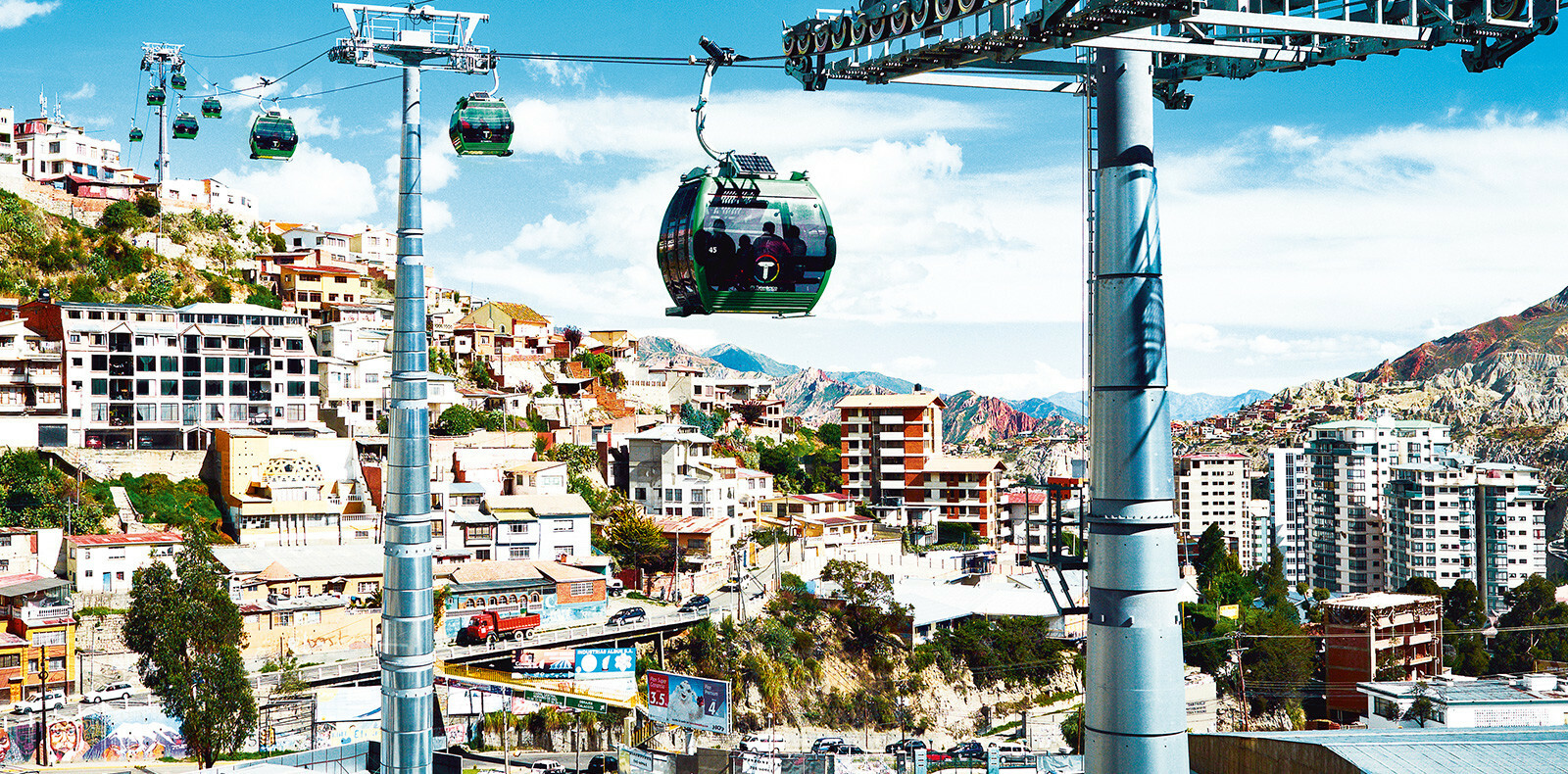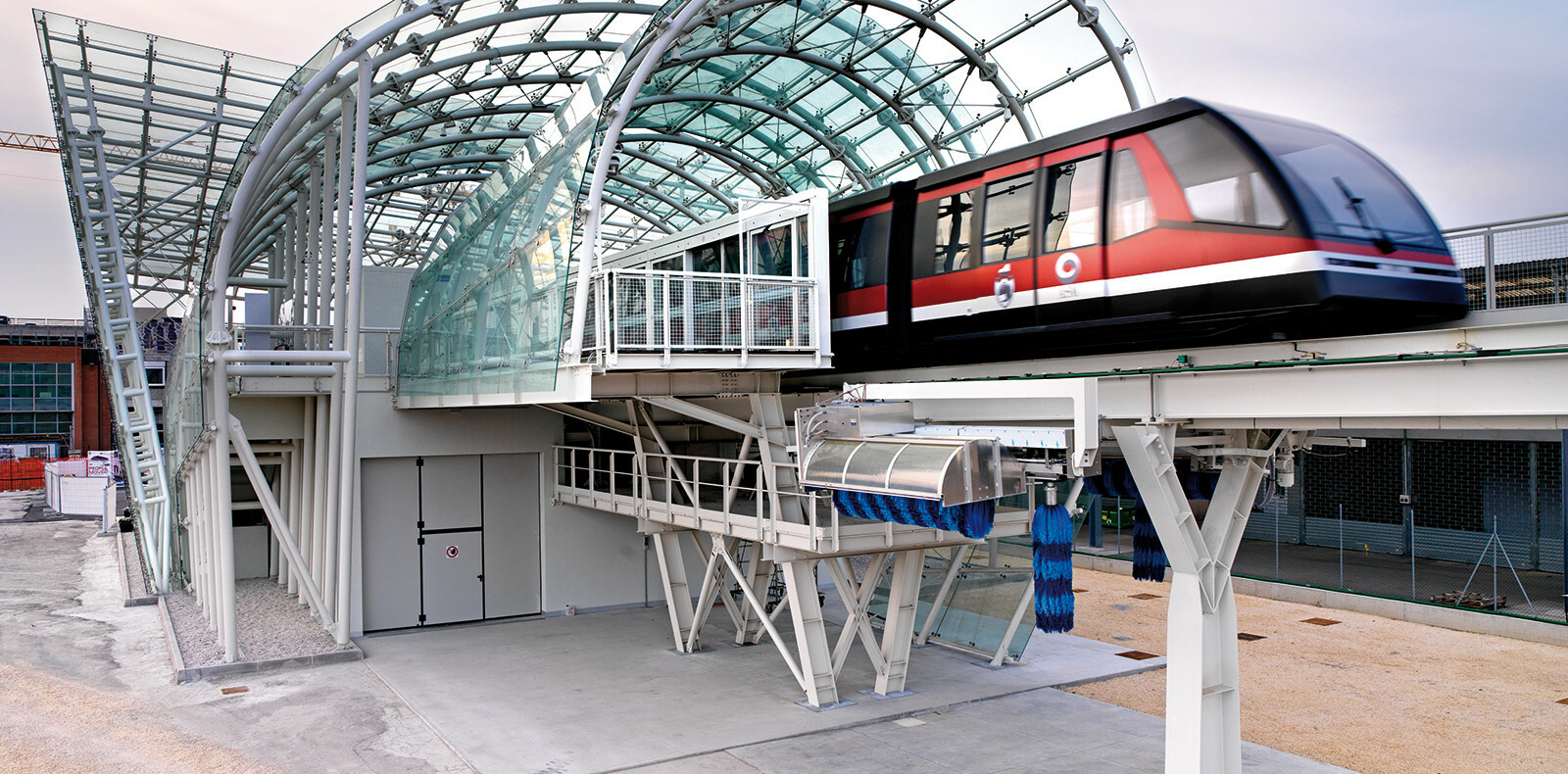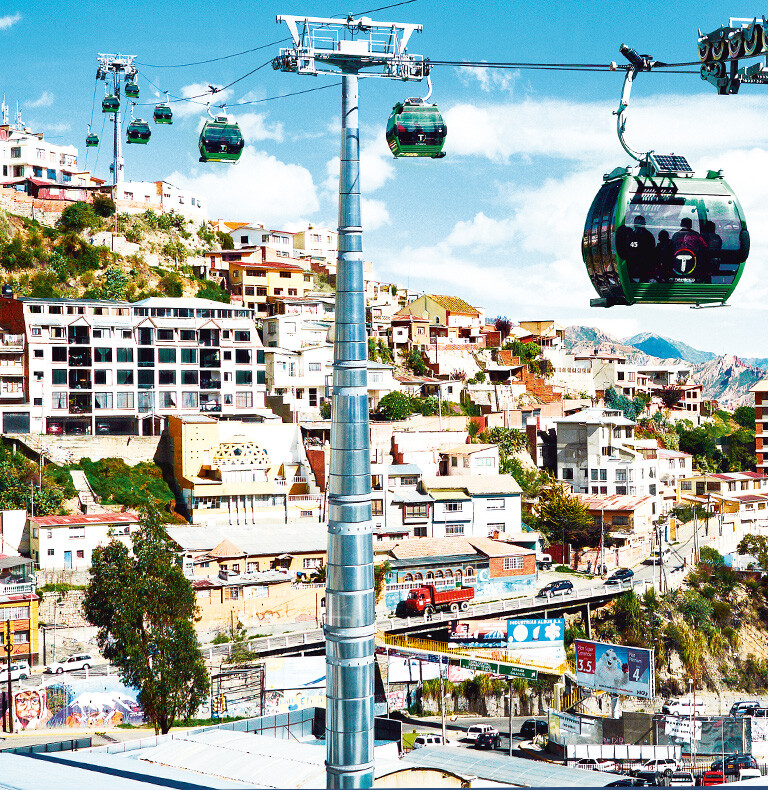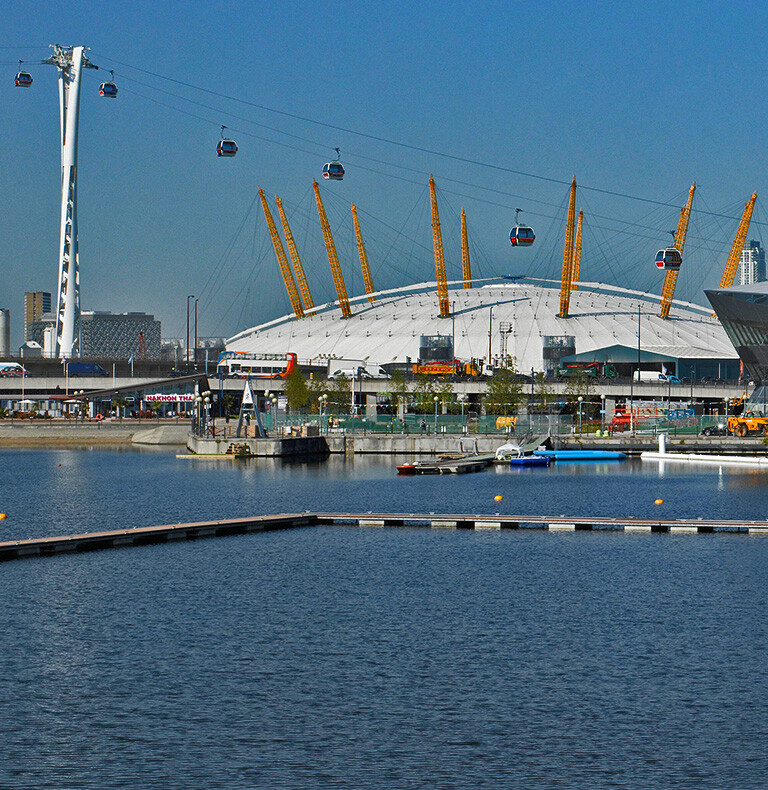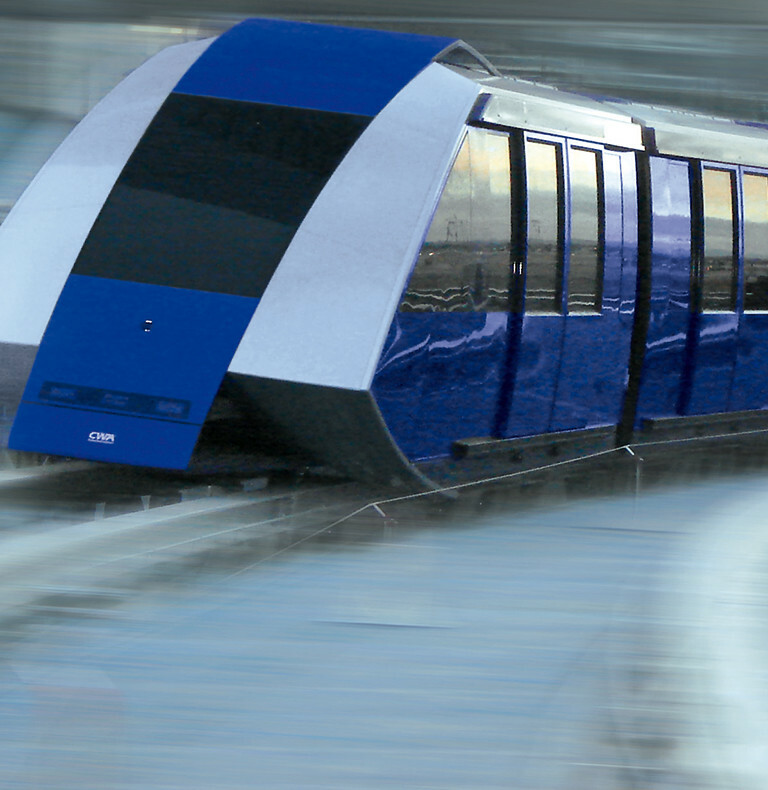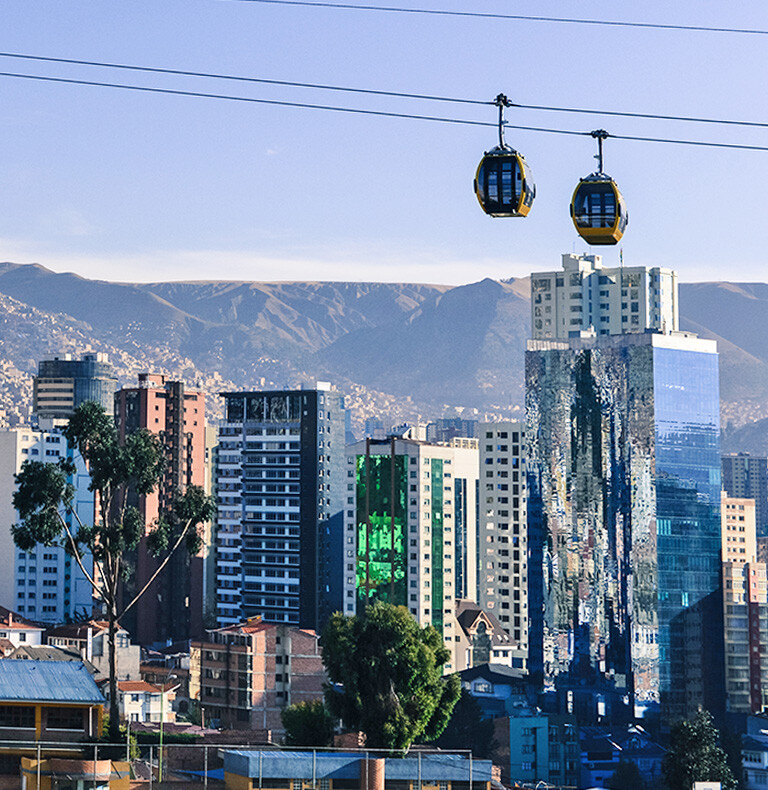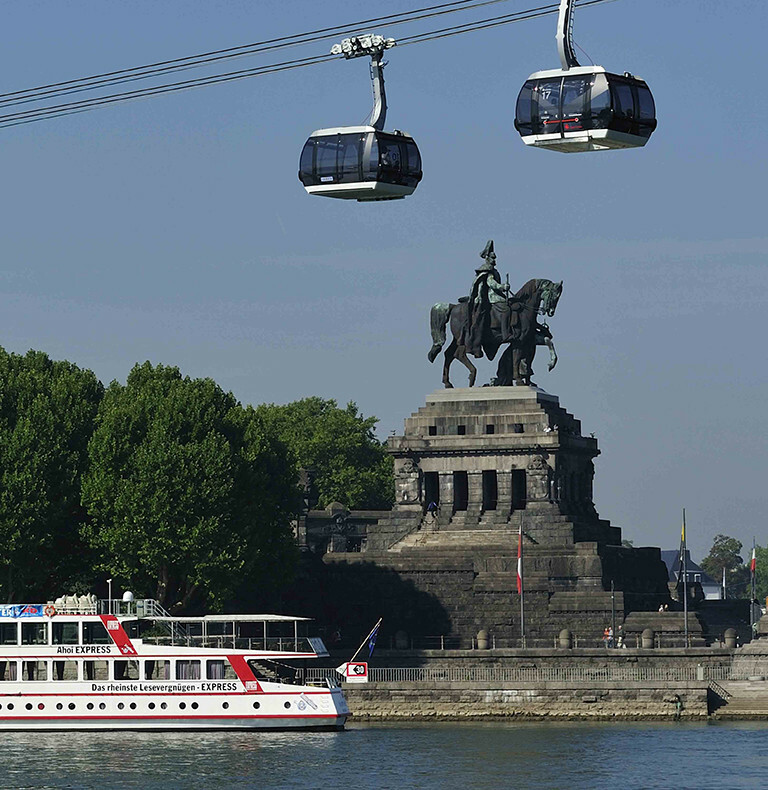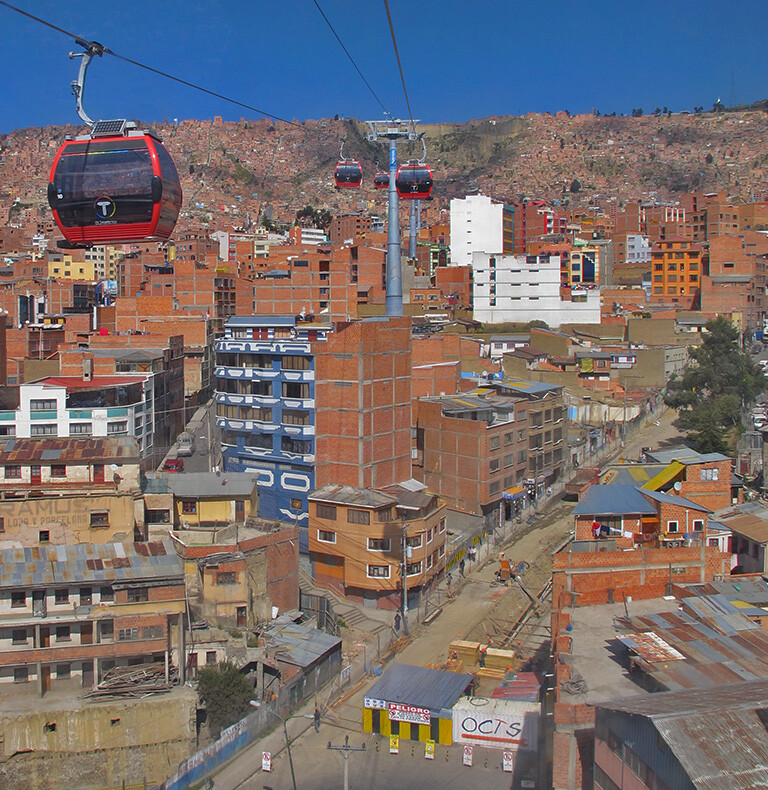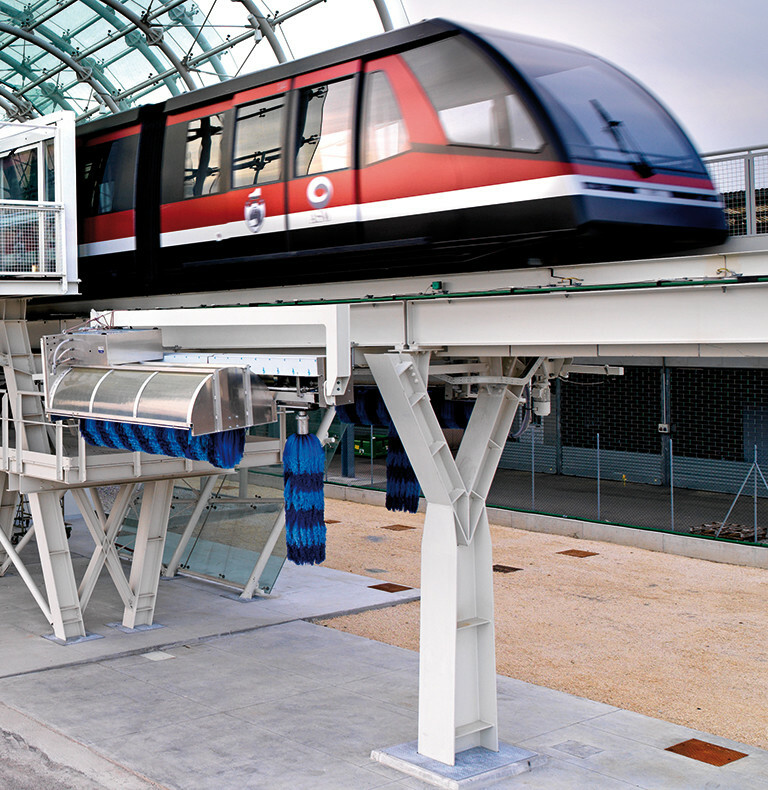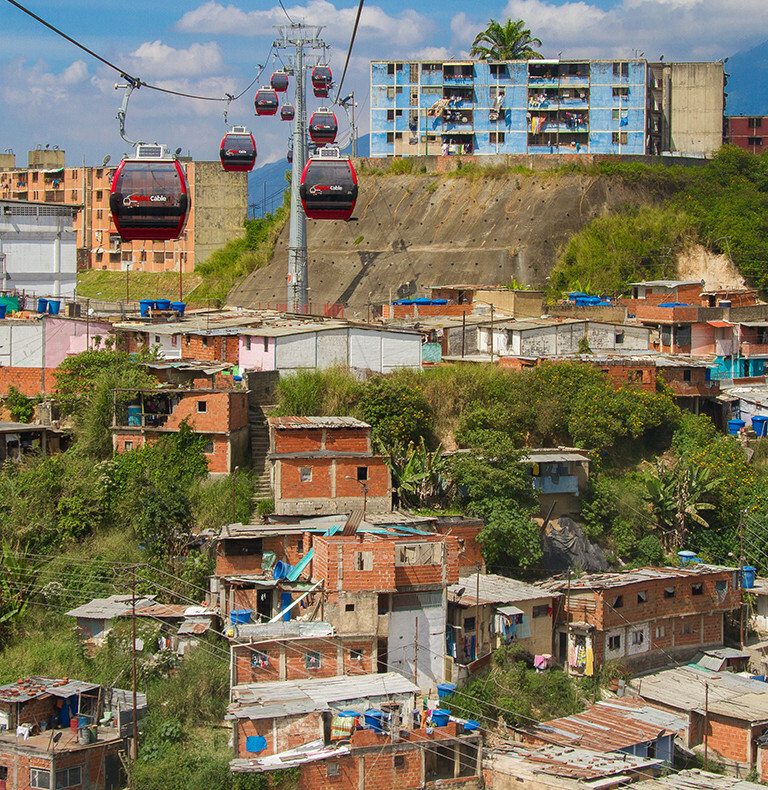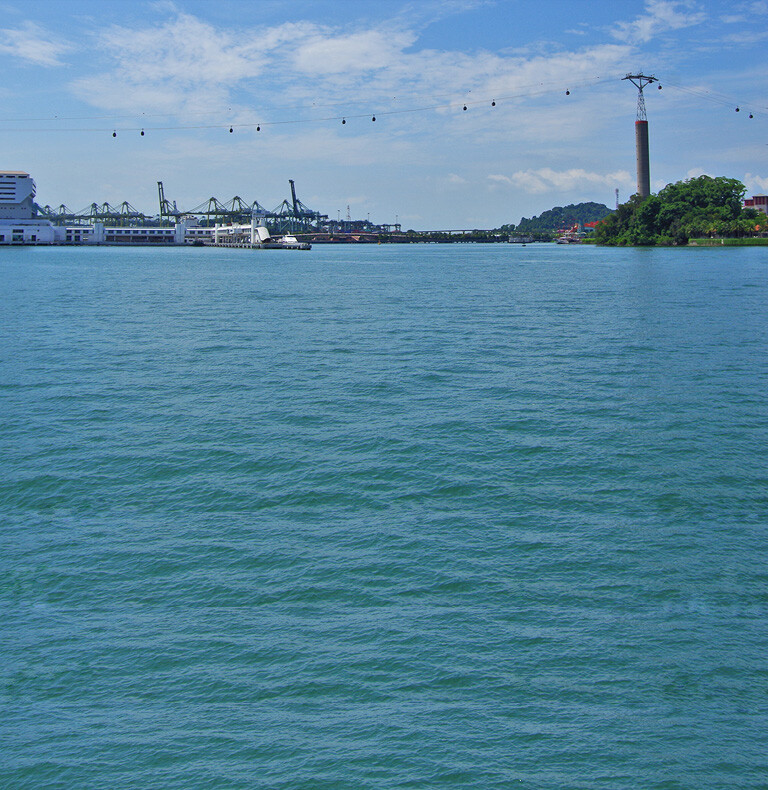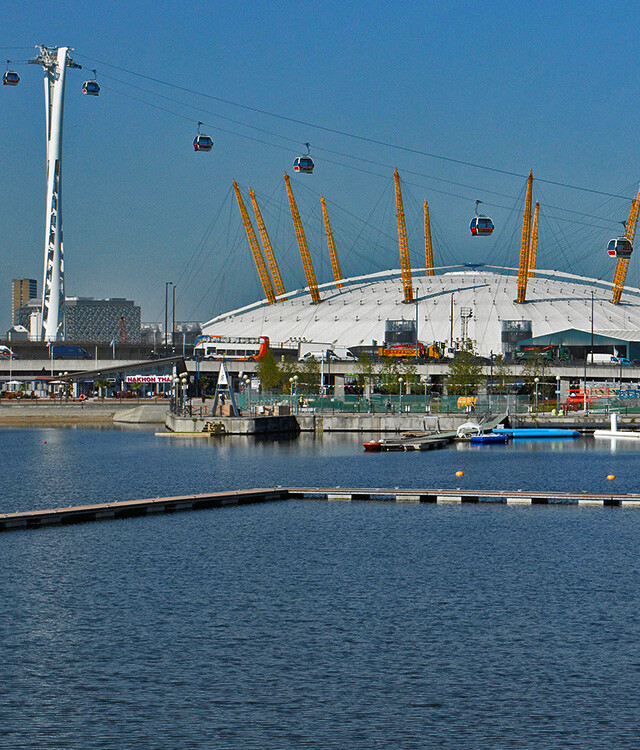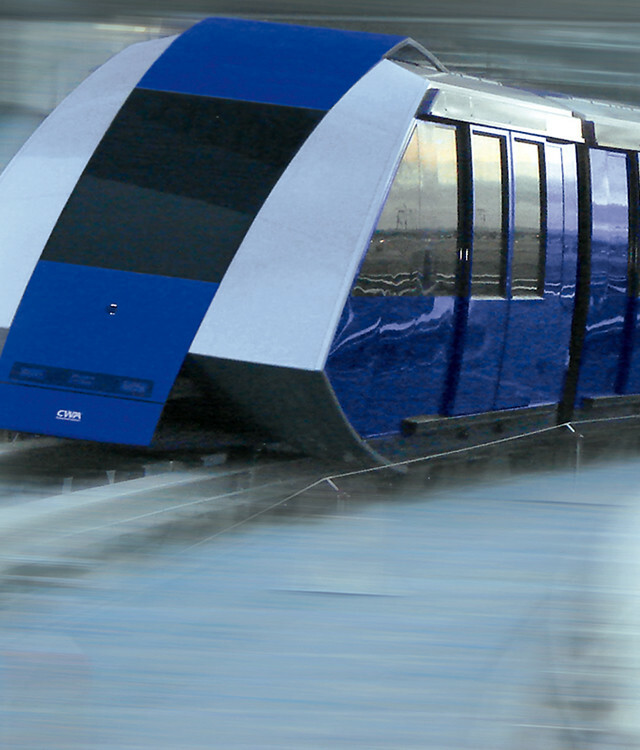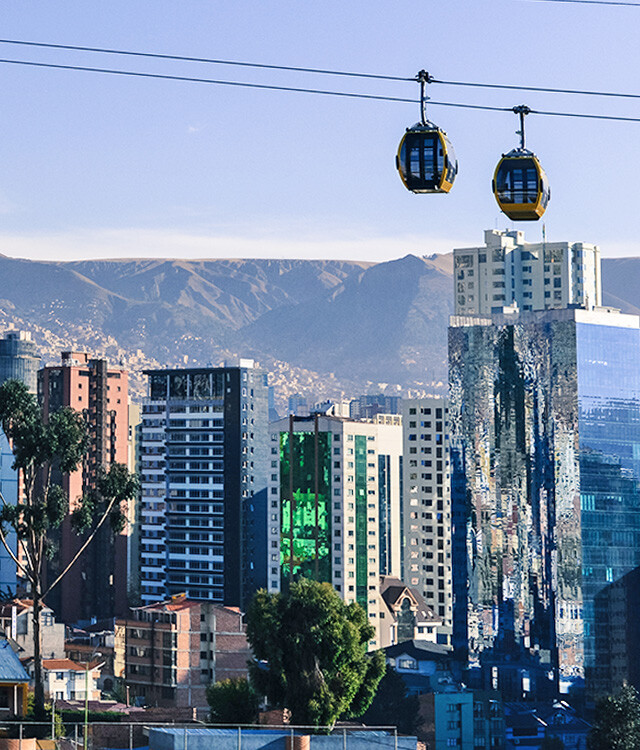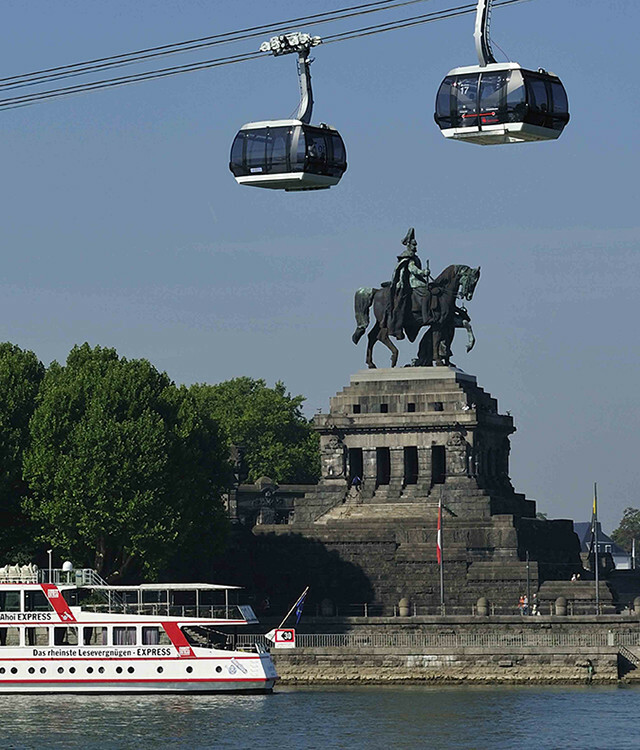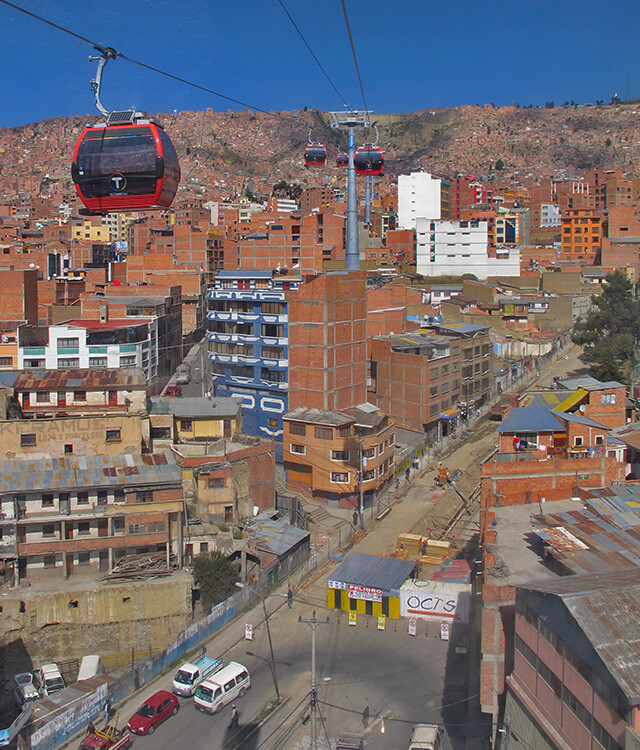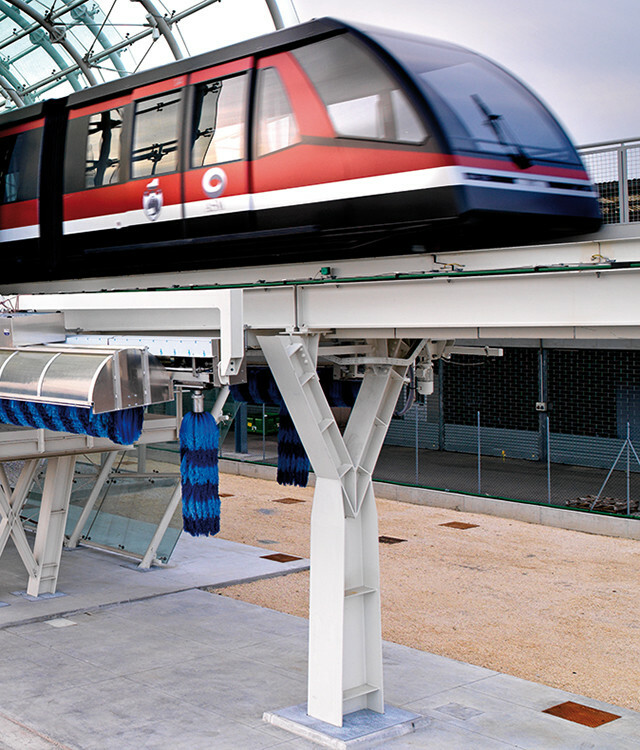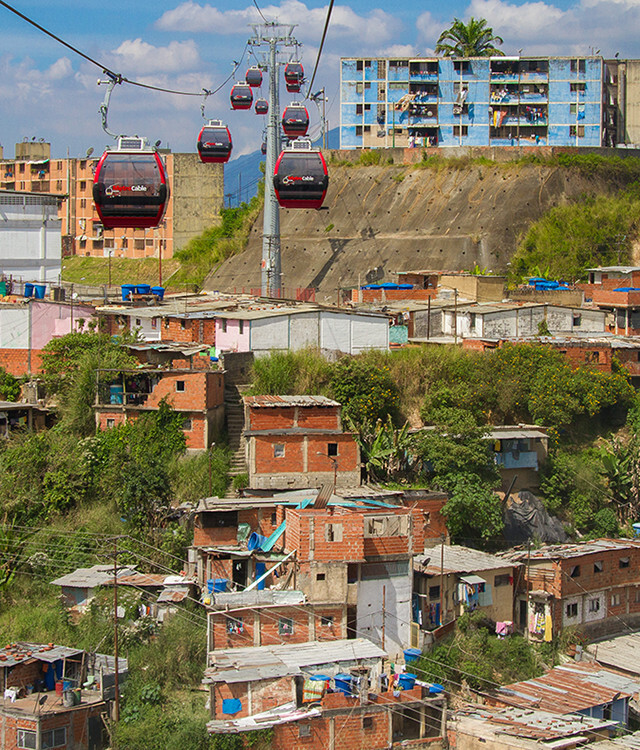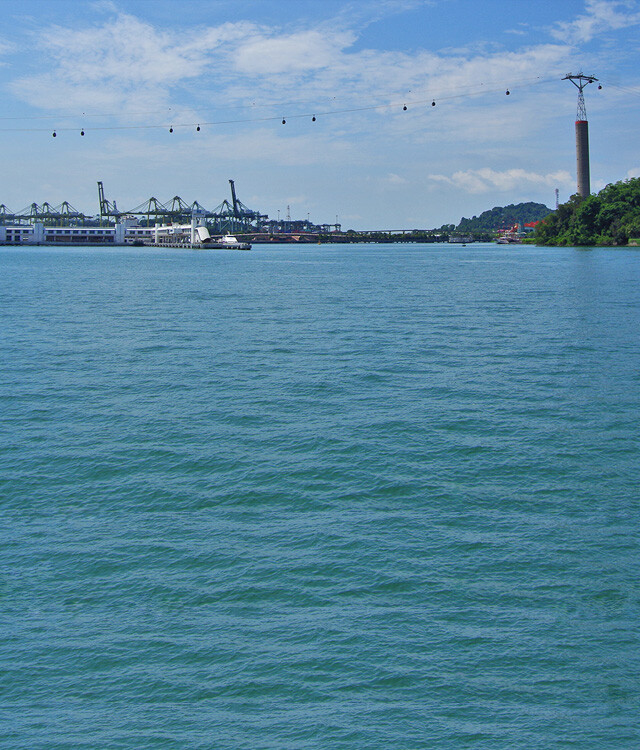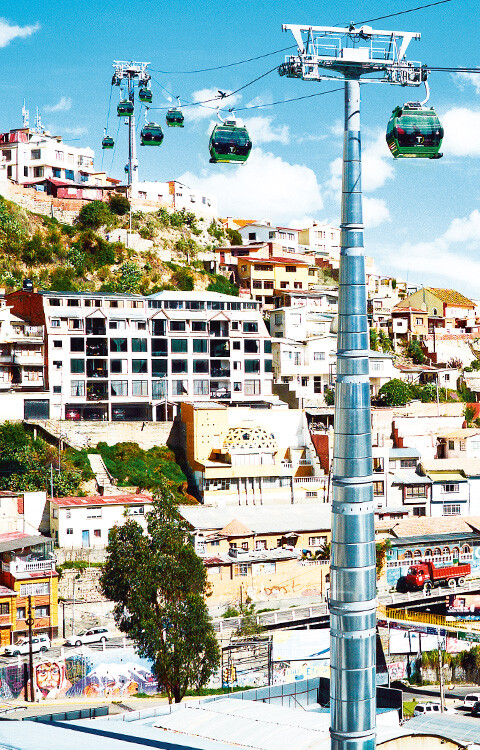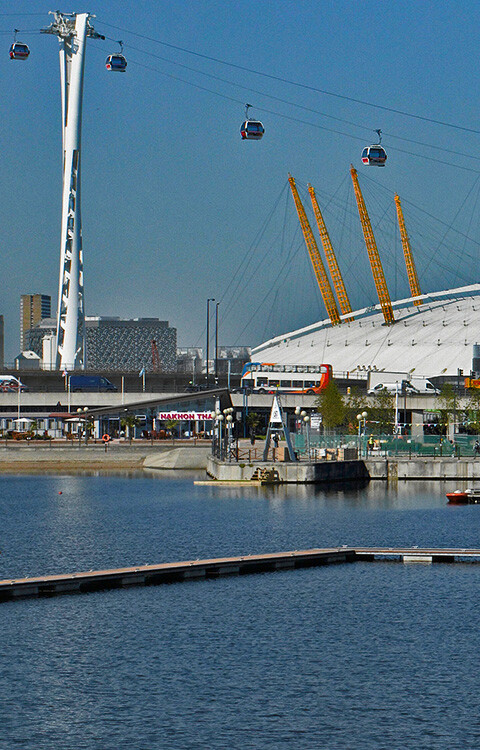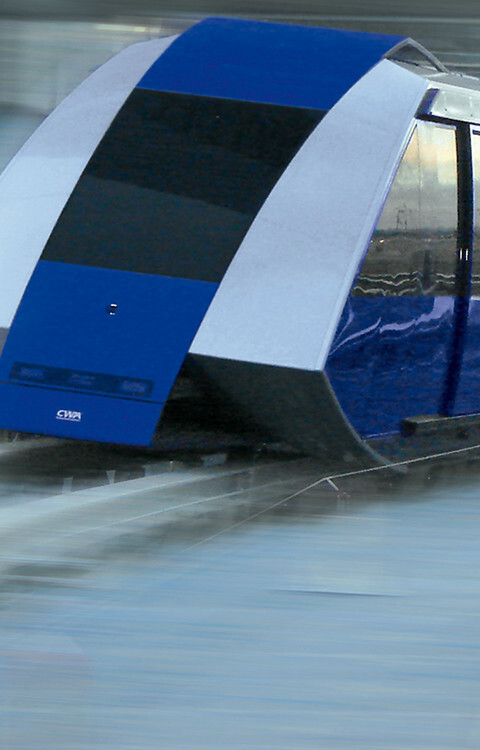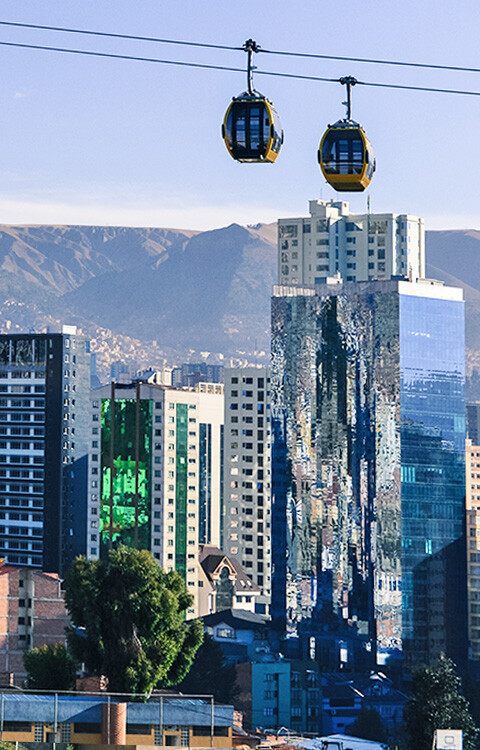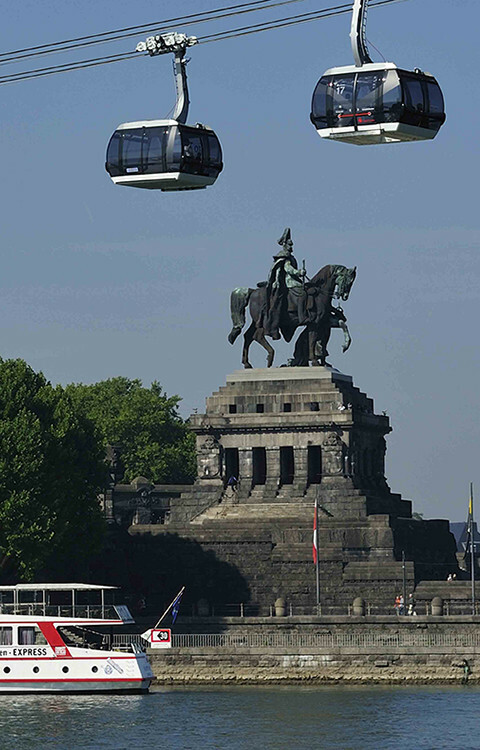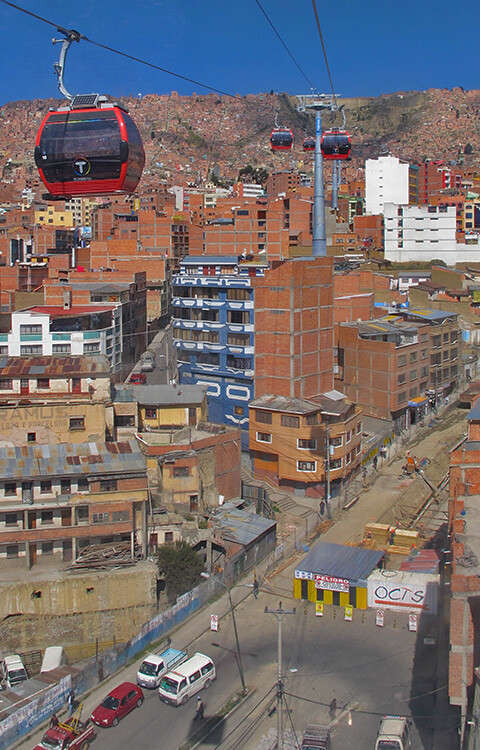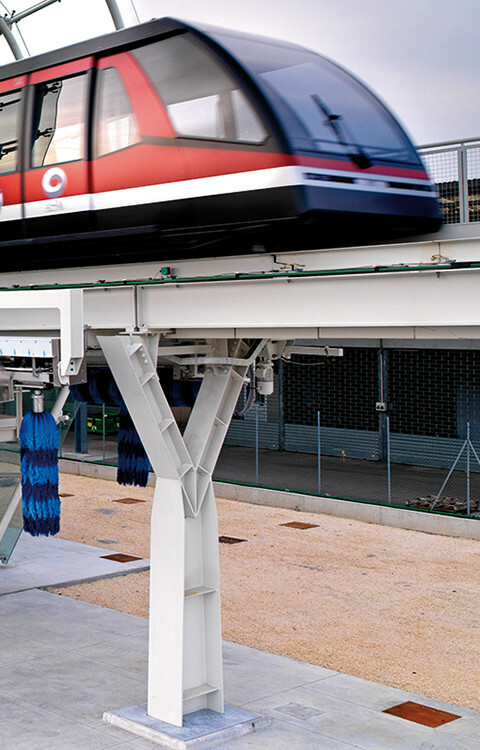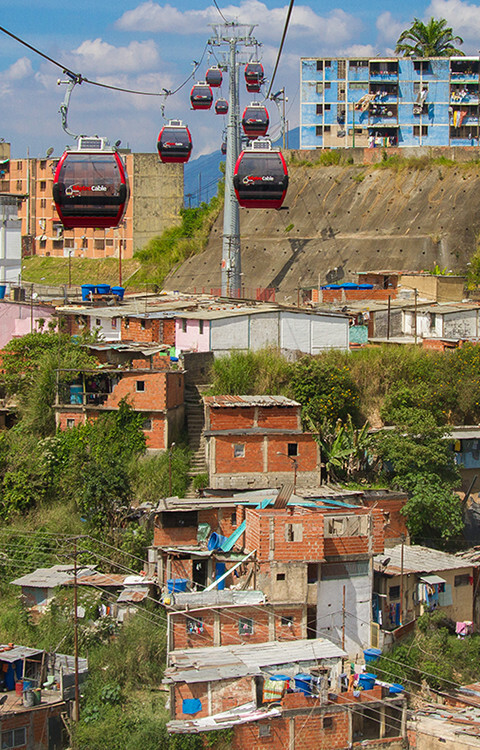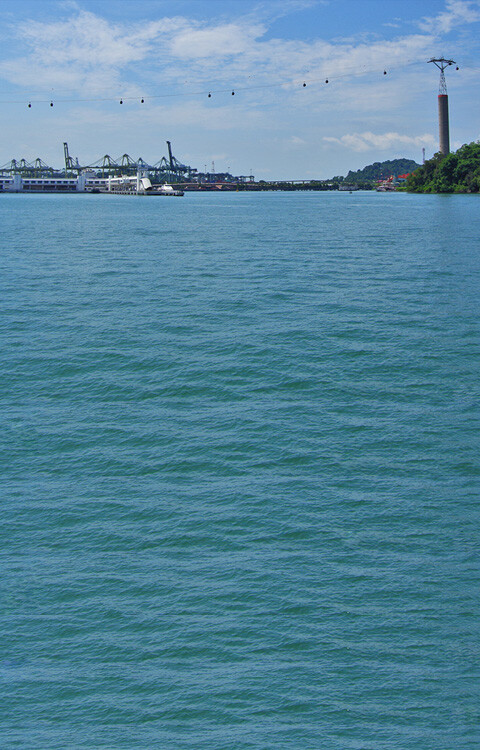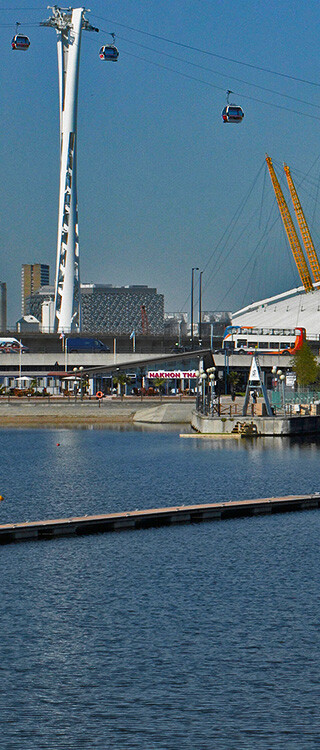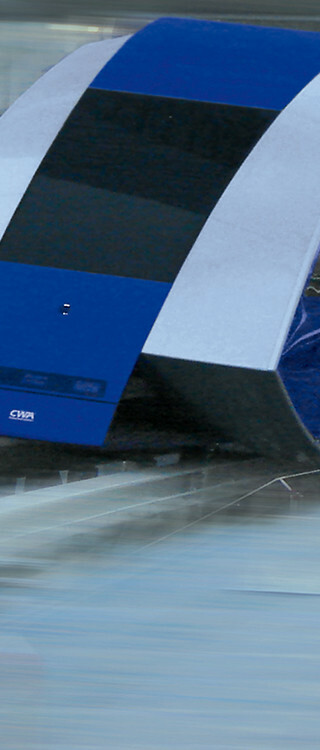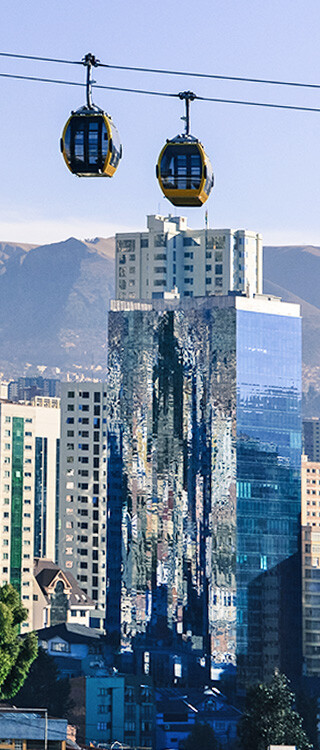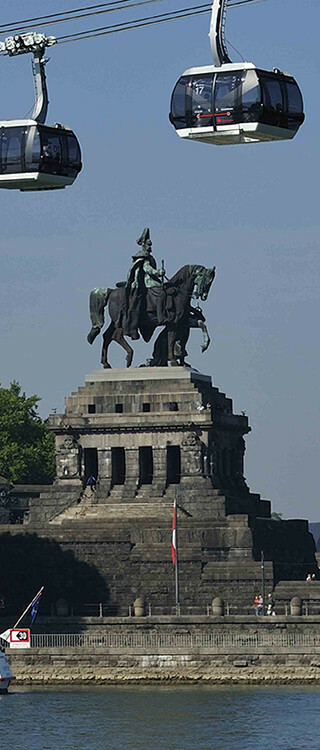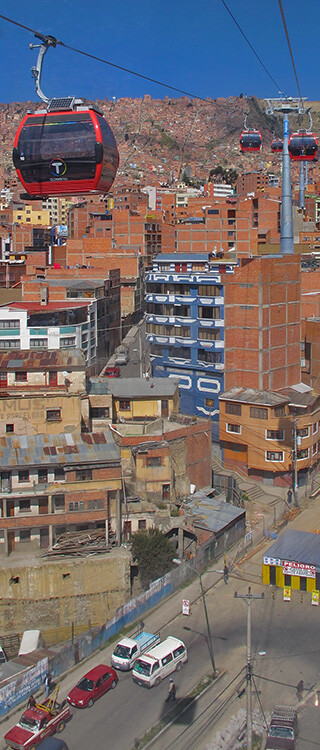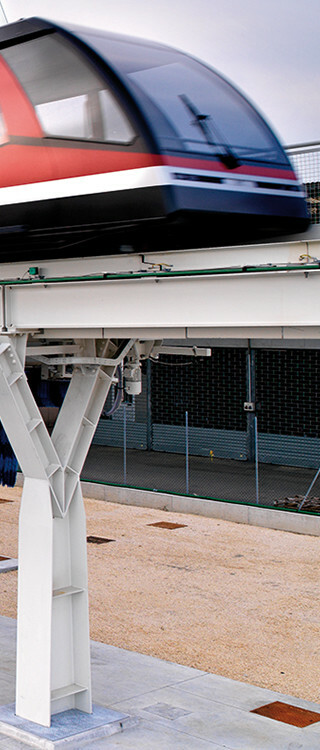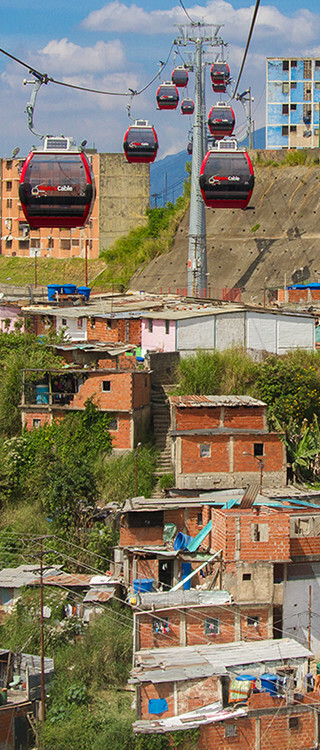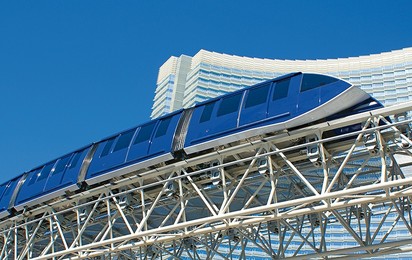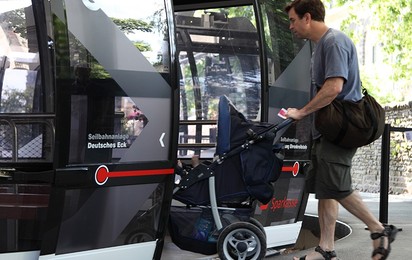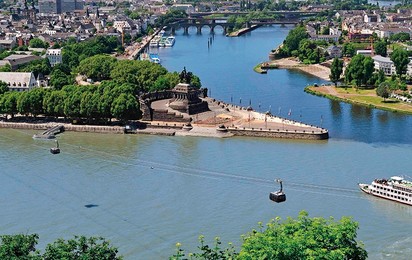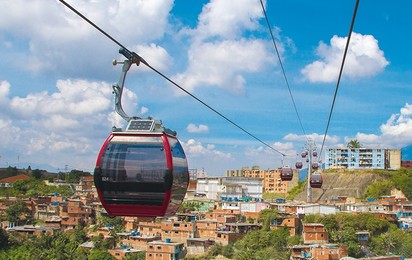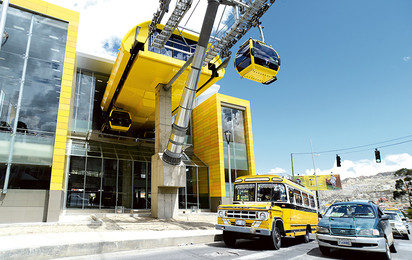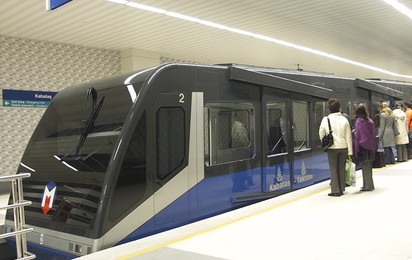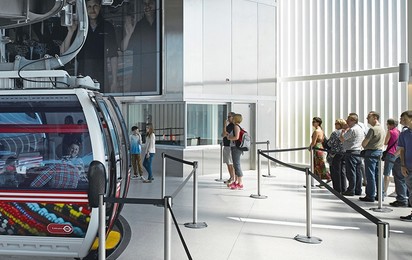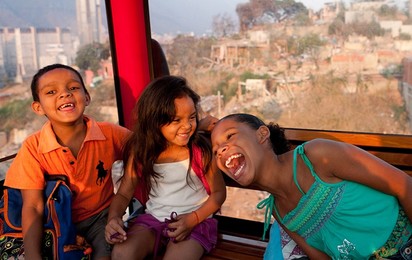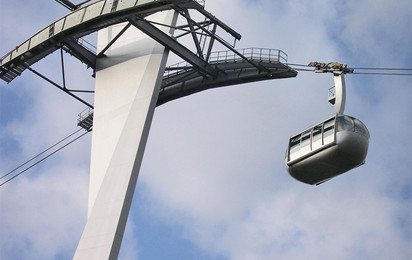Městské lanovkyNad střechami města s multitalentem
Inovativní systémy lanových drah Doppelamyr/Garaventa nabízejí v městském prostředí celou řadu výhod. S lehkostí křižují obytné čtvrti, řeky a existující infrastrukturu a zvládají všechny překážky v dopravě. Díky dokonalé integraci do městských územních plánů nemají lanové dráhy žádné hranice a nabízí nekonečné kreativní možnosti: konstrukce i vybavení mohou být individuálně uzpůsobeny tak, aby vyhovovaly kultuře, místním podmínkám a preferencím zákazníků. Cestující si plně užívají nové pohledy na panorama města, maximální komfort a rychlé spojení při využívání nejbezpečnějsího dopravního prostředku, který existuje.
Díky bezbariérovým nástupištím a výstupištím získávají s lanovkami pozitivní zkušenosti i vozíčkáři, stejně jako cestující s kočárky nebo jízdními koly. Výkonné a zároveň šetrné k životnímu prostředí – systémy lanových drah poskytují spolehlivou odpověď na současné i budoucí problémy v dopravě a jakémukoliv městu vytváří přidanou hodnotu.
Téměř 55% světové populace v současnosti žije ve městech a za méně než jednu generaci se očekává nárůst až na 70%. Důsledkem zvětšující se vzdálenosti mezi domovem a pracovištěm a neregulovaným růstem měst jsou obytné čtvrti stále komplexnější a stávající infrastruktura dosahuje kapacitních limitů. Proto je nutné hledat nová řešení, která pomohou čelit současným a budoucím problémům v dopravě. Lanové dráhy a CABLE Linery jsou inovativní přístupy, které mohou významně přispět k řešení této výzvy.
Městská doprava v přehledu
- přesvědčivě pozitivní vztah k životnímu prostředí
- nejbezpečnější dopravní prostředek
- téměř nehlučný, žádné emise
- jednoduše kompatibilní s dalšími dopravními prostředky
- vysoká dostupnost, spolehlivost a přepravní kapacita
- cenově výhodná alternativa k obvyklým dopravním prostředkům
- krátká doba výstavby
FAQs
In the case of a ropeway, passengers or freight are transported from station to station in or on carriers (cabins, chairs or T-bars) suspended from a rope that is guided over towers. Passengers can board and disembark in the stations. The drive is electric and located in one of the stations. The main components of a ropeway are the carriers, rope, drive station and towers.
The ropeway drive is an electric motor, which is centrally located in the station. It acts directly onto the bullwheel, which propels the rope and the carriers. Brakes, gear units and motors are not required in the individual carriers as these are hauled, accelerated and braked solely by the rope. This technology is very energy-efficient, environmentally friendly and economical.
Various drive concepts exist – with or without gear unit. The drive concept is always adapted to suit the given situation.
There are many ropeway systems. Those best suited to the urban environment are continuous-movement monocable ropeways (detachable gondola lifts) with cabins for max. 10 passengers, reversible aerial tramways with cabin sizes up to 230 passengers, tricable gondola lifts with cabins for up to 34 passengers, funicular railways or Cable Liners.
Ropeway systems for the applications winter, summer, urban and material: detachable gondola and chairlifts, fixed-grip chairlifts, reversible aerial tramways, tricable gondola lifts, funicular railways, Funifors, Funitels, combination lifts, pulsed-movement aerial ropeways, surface lifts, RopeCons, Monoracks, Cable Liners, avalanche blasting ropeways and material ropeways.
The costs of implementing/building a ropeway are a fraction of the cost of other modes of transport: 1/3 that of a tramway, 1/10 that of a subway.
Every ropeway is custom-tailored to the specific project. For that reason, the costs of a ropeway installation depend very much on the individual project and the numerous design parameters such as purpose, transport capacity, vertical rise, number of stations, length, alignment, etc.
The maximum transport capacity of a ropeway is 6,000 passengers per hour and direction.
By way of comparison: To transport 10,000 passengers an hour (5,000 in each direction), you need 2,000 automobiles (fully occupied, with 5 passengers each) or 200 buses (bus capacity for 50 passengers). This, in turn, requires more space (e.g. in order to build a wider and bigger road) and produces noise and emissions.
Ropeways are environmentally friendly. They are electrically operated – with no exhaust emissions and no noise – and they have a comparatively small ecological footprint. Only cycling or walking is more environmentally friendly.
Example: 0.1 kW is consumed per km ropeway trip/passenger. This is the equivalent of blow-drying your hair for 5 minutes.
Doppelmayr/Garaventa can build virtually any ropeway system in urban spaces. The choice of system will depend on the “traffic problem” to be resolved and the requirements. Parameters such as purpose, alignment, safety, vertical meters to be climbed, availability, transport capacity, passenger groups to be carried (bikes, wheelchairs, strollers), carrier comfort, etc. are the deciding factors.
Ropeways generally optimize material and passenger flows – irrespective of whether it’s in cities, at ski resorts or in summer tourism. In addition, ropeways boost the development of tourism.
The trip time on a ropeway is short. The great advantage of a ropeway is that it can travel without being affected by other means of transport (buses, automobiles, etc.) – because it moves in an entirely different transport plane and glides above road traffic and congestion. Furthermore, the ropeway takes virtually no detours (as it moves through the air). Another factor in its favor is that a ropeway operates continuously (with no timetable and no stops).
A continuous-movement monocable ropeway runs at up to 7 m/s (25.2 km/h); a tricable gondola lift at up to 8.5 m/s (30.6 km/h). Examples from road transport: In Vienna, the average speed of road traffic is 21 km/h; in Berlin it is 18 km/h and in Stuttgart 17 km/h. This traveling time also reflects the need to respect laws and standards.
The height and architectural design of ropeway towers can be adapted to suit the relevant situation.
Tower height depends on the ropeway system, the required height above ground, tower spacing, topography and other factors. The towers in La Paz, Bolivia, for instance, are on average around 22 meters tall.
Ropeway cabins come in many sizes and variations. Depending on the ropeway system, these can hold from 6 (continuous-movement monocable ropeway) to 34 (tricable gondola lift) and as many as 230 (reversible aerial tramway) passengers. Ropeway cabins are also designed for barrier-free access and can therefore be used by everyone.
The cabins are designed to suit the respective purpose (e.g. for carrying freight as well as passengers) and to address other crucial parameters such as transport requirements (bikes, wheelchairs, strollers), desired comfort and transport capacity.
The ropeway opens up an entirely new transport plane: It travels above existing infrastructure, which can still be used for city life. Obstacles such as rivers or hills can be crossed without any difficulty. The ropeway moves independently of traffic volumes and is not held up by congestion. In addition, ropeways run continuously and therefore do not need a timetable.
Ropeways also have a host of advantages that harmonize very well with other modes of transport. This means that ropeways can broaden a city’s transport infrastructure as well as connecting up major hubs or hotspots with the transport network. As a result, they provide an ideal complement to and relief for the existing mobility system.
It takes roughly 2 years to complete a ropeway installation. In comparison with other means of transport, a ropeway project can be implemented relatively quickly.
Stations can be integrated into existing buildings, for instance, or infrastructure incorporated or built above roads. Towers require little space and can readily blend in with their surroundings. The time required to build the world’s biggest urban ropeway network in La Paz with 10 lines was roughly 6 years.
Ropeways are barrier-free. They are designed to carry all types of people – seniors, families with children, people with physical impairments, etc. – and also for transporting cargo. Cabins have no problem providing room for bicycles, wheelchairs, baby strollers, luggage and pallets. Level walk-in in the stations ensures easy access. The bigger the cabin, the greater the convenience for carrying bikes, etc.
Each ropeway project is unique and has to be considered individually. The ropeway has the advantage that it readily lends itself to meeting a wide range of requirements – it is custom-tailored to mobility needs.
For example, a ropeway line can connect major transport hubs to the network and/or extend the existing local transit infrastructure and therefore substantially relieve traffic congestion.
The first requirement that a ropeway has to meet is that of mobility. The various ropeway systems (with their different parameters) and their respective characteristics meet the needs of a mobility solution to differing degrees (barrier-free access, comfort, transport capacity, etc.). For that reason, the system has to be chosen to meet the requirements of the specific project.
The requirements to be met often point to which ropeway system would be best suited. Barrier-free access, transport capacity, structural footprint and comfort needs can already be the factors that decide which ropeway system would be the most appropriate.
Ropeways are a highly flexible mode of transport. Their structures (stations, towers) can be integrated into the existing infrastructure (houses, transport hubs, etc.) and their architecture individually designed to harmonize with the cityscape.
Ropeways can also be linked with and integrated into a local transit network (combined stations, ticketing, etc.). The towers take up little space and additional amenities like shops, info points or restrooms can be provided in the stations.
There are two types of maintenance:
- The preventive maintenance which is an ongoing process performed daily, weekly or when required based on the hours the component is in use. It is performed in the times the installation is not operating e.g. during night time after closure to the public. Preventive maintenance does not require a shutdown.
- The planned / scheduled maintenance requires a short shutdown. It is needed for the maintenance of larger parts or the replacement of those parts which reached the end of their service life.
Modern cable car installations have sophisticated systems that monitor all components. The operation data combined with the maintenance schedule allows for an optimised workflow to reduce the number and length of shutdowns. A well-planned rope replacement can be executed within 3-5 days, a time frame similar to track and switch maintenance for the metro or tram.
Monocable Detachable Gondola systems (MGD) can operate in wind speeds up to 60 – 70 km/h. Tri Cable systems can operate in wind speeds up to 100 km/h. Cable car operations are stopped during thunder storms.
Based on the weather forecast, precautions will be taken in good time to prevent any risk resulting from adverse weather conditions. Modern weather forecast and monitoring systems, like those ones used for airports, guarantee a safe operation with a minimum of down times during thunder storms.
The frequency of cabins arriving at the station depends on the capacity, the cabin size and the length of the cable car line. It is possible to have a cabin arriving every 12 seconds (headway).
Once the cabin has entered the station it is detached from the cable loop and slowed down to a speed that allows for comfortable alighting and boarding of all passengers including those with mobility impairments or wheelchair users. The speed of the cabin at the platform (where boarding and alighting takes place) is around 0.2 m/s.
Generally, cable car systems have the same resilience in extraordinary events like other public transport systems e.g. metro, tram, busses. Vandalism or deliberate destruction and arson can happen anywhere.
Modern recovery systems aim to allow for alighting in a station in case of an emergency to avoid abseiling of passengers on the line. Cabins do not have an engine which reduces the possibility of an incident resulting from an engine failure.
The Doppelmayr recovery system allows to move all cabins to the nearest station where passengers can alight. Abseiling of passengers on the line is a last resort, even in the case of extraordinary incidents.
Modern cable car installations can achieve an operational availability of 99.5%.
The size of a depot depends on the technical parameters of the installation like the length of the system, capacity and track speed. An example: A cable car installation with a total length of 4km and a capacity of 4,000 pphpd, 6.0m/s track speed and 10-seater cabins requires approximately 160 cabins. The cabins are normally stored in a depot integrated in the station building, a storey below or above or at the platform level.
The depot for 300 cabins plus spare cabins and maintenance facilities measures around 60m x 50m (3000sqm).
The distance depends on various factors such as the type of the cable car installation (Monocable / Tricable), the local topography and the system’s capacity.
Typically, there is a distance of 150 to 300 metres between towers for a monocable installation and 800 - 1500 metres for a tricable installation.
It requires to define the systems specifications in detail to identify the requirements for a contractor. Normally, well-equipped and qualified steel construction companies certified in accordance with the mandatory standards can manufacture the components.
If you have any question that have not been answered in this section, please feel free to contact us via email at mobility@doppelmayr.com – we are pleased to help!
